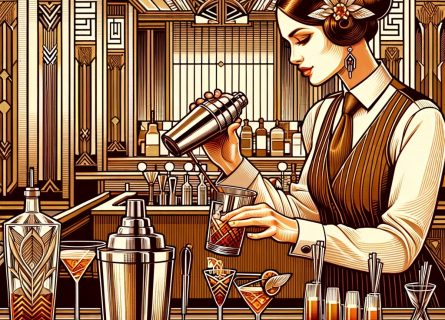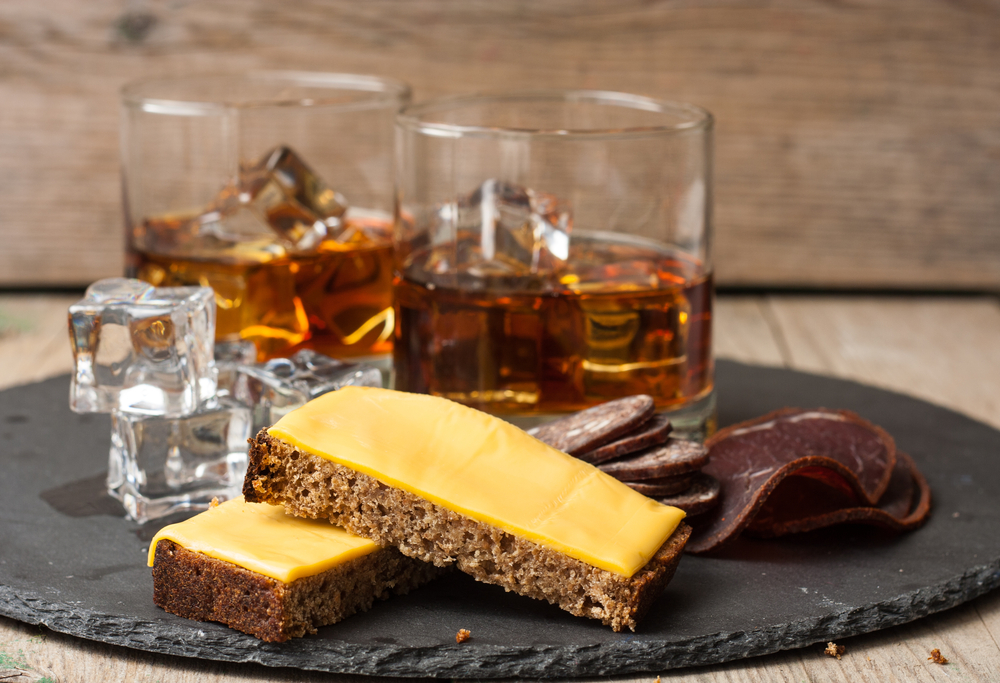
Timeless Irish Whiskey Cocktails: Exploring Classic Mixes
September 4, 2019
Irish whiskey's resurgence in mixology: celebrated in classic and modern cocktails, where its distinct flavors are showcased, not concealed.
By: James lawrence / Last updated: November 30, 2023
At first glance, “How to drink whiskey?” is a topic worthy of ridicule. Open the bottle, pour the liquid into the glass, and sip – surely that’s all that is required to appreciate this noble brown spirit?

Yet, while a guide to drinking whiskey might appear akin to an instruction manual on opening a front door, whiskey is a complex subject with a historic and fascinating culture. It takes years to make and centuries to make well. It is also a subject full of misapprehensions and disagreement. Some experts believe that whiskey benefits greatly from adding water; others abhor the idea. Some argue that you should spit whiskey when tasting professionally; others insist that you cannot appreciate the whole experience without swallowing it.
However, there is a broad consensus among experts and professionals on which glass to use. The iconic and ubiquitous tumbler is perfect for blended whiskey or bourbon when mixers or ice might be added. But it is useless for appreciating single malt whiskey’s complex and multi-faceted aromas. We believe a tulip-shaped glass is ideal because it focuses and concentrates the aromas into the nose. You can buy them at most glass shops at a modest cost. Others, believe it or not, favor a Champagne flute, sherry glass, or even a white wine glass. All of which triumph over tumblers when used to appreciate fine whiskey.
That said, whiskey doesn’t have to be ‘fine’ to be fully appreciated. The wealth of whiskey styles is the category’s greatest strength – while whiskey isn’t wine, identifying the diversity of flavors will significantly enhance your enjoyment of it, not least because you can identify flavors that appeal to you.
At the top of the hierarchy arguably stands single malt whiskey. A blend of yeast, water, and malted barley, single malt whiskey must be the product of one distillery. Scotland is the leading player in this sector, but excellent single malts are made globally in countries including the US, Japan, South Africa, and Germany. However, few whiskey lovers would confess to disliking a Scottish single malt. Many distilleries dry the barley over a peat fire, which imparts signature smoky and peaty flavors, which some adore and others revile.
In contrast, grain whiskey is produced from grain or grains other than malted barley, including rye, wheat, corn, and unmalted barley. Blended whiskey is a combination of single malts from different distilleries mixed with grain whiskey. But this is just the beginning – blended malt whiskey, pot still whiskey, Bourdon, and rye whiskey all vie for the whiskey lovers’ attention. The net result is an enviable mosaic of flavors and textures.
But in whiskey, there are two styles – sweet and savory- but they are not mutually exclusive. Many whiskeys – though not all – tend to have defining characteristics that either lean toward flavors of banoffee pie, maple syrup, ginger barley, and Christmas Cake or earthy, mushroomy, autumnal flavors. Most American and Irish whiskey and many Speyside and Lowland whiskeys fall into the sweet category. In contrast, several Highland and some Scottish Islands and Japanese whiskeys offer a more savory range of aromas and flavors.
The real beauty of whiskey is its lack of pretension. Snobs and bores are not permitted in the world’s distilleries – whiskey is, at its heart, a simple drink made of grain, yeast, and water, running the gamut from harsh firewater to a sophisticated and complex social lubricant. Nevertheless, it should have no airs and graces. But while learning to appreciate whiskey professionally does not have to involve strict guidelines or a pompous ceremony, observing a few pointers can help you along your whiskey journey and aid in enjoying all manner of whiskey styles.
A tulip-shaped glass is ideal for appreciating malt whiskey styles. The key is not to rush the ‘nosing process’ – whiskey has a robust alcoholic content that can hurt the nostrils if too quickly inhaled. It is best to cautiously approach a glass of whiskey, gently inhaling the aromas. For that very reason, professionals tend to nose whiskey with more distance between the face and glass than wine critics.

Experts rarely agree: some deride adding water while others insist upon it. Our experience suggests that a dash of water can make the alcoholic attack on the palate more manageable and less harsh, allowing the taster to enjoy a broader range of flavors. Besides, distilleries routinely add water before bottling to bring the alcohol level down, which can hover around the high 60s after distillation. Blenders will use water to take samples down to just 20% ABV; water is crucial for breaking down the whiskey and releasing an array of aromas, making appreciation easier. Of course, if you like the heat and potency of high-strength whiskey, then ignore the above!
Another point of debate concerns whether to spit or swallow whatever you’re tasting. On the one hand, the palate can tire quite quickly when sampling such a powerful spirit as whiskey – professional tasters must keep a clear head. Yet, to fully judge a whiskey’s full potential and quality, it is advisable to swallow. One of the hallmarks of excellent whiskey, like wine, is the quality of the finish. The warm feeling as the spirit passes down the throat and the impression left afterward are crucial to the tasting experience. We always recommend sipping and savoring any high-quality whiskey to understand the nuances inherent to your glass of amber nectar.

Can you enjoy whiskey with food? Many would argue no: “The alcohol sears your throat and overwhelms rather than compliments cuisine” is an observation we’ve heard many times. Yet whiskey and food matching are not as clean-cut as some critics suggest. For many years, beer was disregarded as an acceptable accompaniment to cuisine – that stale cliché has been resoundingly put to death. So, too, can whiskey match a range of dishes, particularly when umami flavors are present? Indeed, cheese and whiskey are just one beautiful combination that often silences the naysayers. The fats in cheese react extremely well with whiskey, and many regards pairing blue cheese with strong single malts as a gastronomic marriage made in paradise. Roquefort adores single malts like Lagavulin, while hard cheeses such as cheddar and Parmesan tend to prefer sweeter, rounder whiskeys – rye whiskey is a surefire winner.
Seafood is another natural partner to whiskey. Langoustines and scallops love spicy/peaty single malt styles: the shellfish’s saltiness bounces off the whiskey’s seaside notes. Foie gras is another pairing that always astounds food & wine lovers. A rich and fruity Speyside whiskey cuts across the fatty richness with aplomb, while Asian dishes like Peking Duck are made for fruity Speyside single malts. Even desserts can work surprisingly well with sweeter whiskey styles; Dalwhinnie, an award-winning single Highland Malt, is rarely fazed by even the most potent and unctuous dishes. Chocolate is the best partner for this alcoholic bottled honey.
Of course, the notion that whiskey and food are (potentially) an ideal match will always remain alien to some. We prefer, however, to keep an open mind and experience the surfeit of delicious gastronomic experiences that this wonderfully versatile spirit can provide.
If you would like us to customize an exclusive luxury tour, contact us and let us know your travel plans. We offer luxury food and wine tours for private groups of a mininium two guests. In addition, all of our private, chauffeured tours are available year-round upon request.


Rock And Stormsays:
September 9, 2020 at 9:17 am
It is great blog post. Helpful and Informative tips. I like it. Thanks for sharing these information with us.